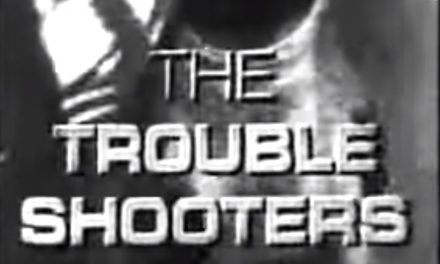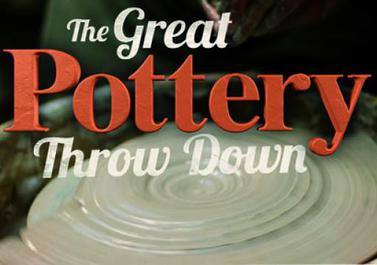‘And we are LIVE… Hello from Europe, hello from the ECREA Television Studies Section’.
cstonline.netgiphy.com/gifs/eurovision-reaction-crowd-1zRiIkfvn7iLk9cQO5
I think we should make more of a song and dance of it, don’t you? When I originally came across TV Studies in 1998, I don’t think much European Television Studies did yet exist. Milly Buonanno was already working on it in Italy. Lothar Mikos (here with us) in Germany. There were some scholars such as Ib Bondjeberg and Espen Ytreberg in the Scandinavian countries. The Dutch/Indonesian scholar Ien Ang. And, of course, the British scholars. It was during my undergraduate degree, though, so I didn’t quite have the overview that you get when you are a PhD student or indeed in an academic job.
Still, I can honestly say it was surprising to find that there was a proper discipline called TV Studies. So, our get-togethers should be celebrated because they highlight just how vibrant the field has become. This event was organised at the University of Groningen on 24-25 October 2019 by the ECREA Television Studies management team (Berber Hagedoorn, Susanne Eichner and Juan Francisco Gutiérrez Lozano). Here are scholars from Italy, the Netherlands and Belgium, Germany, Denmark, Finland, Norway, Greece, Spain, Portugal, Switzerland, Czech Republic, and the UK (I hope I haven’t forgotten anyone). The conference had a small scale and focused character, without parallel sessions, which – as keynote speaker Vilde Schanke Sundet mentioned – made the whole conference into a dialogue.
Absences are, however, keenly felt. Our friends from many Central and Eastern European countries are noticeably missing. Also missing is the French contingency.

Keynote speaker Jeanette Steemers adressing policy and production encounters around children’s ‘television’ and diversity. Photo: Oisin Sheerin.
The conference is focused on the Youthification of Television, a generally under-developed area of research with some obvious exceptions (Lury, 2001, Davies and Dickenson, 2004). Indeed, it is noticeable that the programme that is dominating discussion (with a full panel dedicated to it) is Skam. Skam is a Norwegian multiplatform drama, released both as transmedia, live/’real time’ narrative and as end-of-week episodes. It was made by the Norwegian public service broadcaster NRK who made it as a result of noticing a lack of engagement of the young audience with their content and they were trying to find a way of engaging them. What is striking about the programme is the level of research NRK was willing to do as part of the production. Hundreds and hundreds of interviews with young people (see Schanke Sundet, forthcoming [1]). The panel on Skam examined the translations of the drama into other European contexts including Italy, Spain and Germany. What was striking was a question that keynote speaker Jeanette Steemers asked: how is something that was so clearly developed with a public service mission (to serve an underserved audience group) monetised on? Particularly the Spanish and Italian remakes totally operated in a commercial context, and as Luca Barra made clear the question of monetisation was indeed so important that for the final series, the Italian commissioner put it behind a pay wall. In Spain, the gigantic Movistar+ was able to be a bit more laissez-fair, largely because it imagined Skam as a loss-leader, but one that would help the streaming site develop significant brand value.

Conference organiser Berber Hagedoorn chairing the panel on Negotiating Platforms and Screen Culture
However, what the discussions highlight is there seems to be a bit of a mismatch between public service providers and commercial ones. Public service providers lead in innovation as Vilde Schanke Sundet’s keynote made clear, but this also leads to a potential problem: how do you keep innovating when a success story is constantly standing ahead of you? At the same time, as a panel on Danish TV for children and young people made evident, public service broadcasting is highly regarded by the youth. They might watch more YouTube (a fact pointed to by speakers from Germany, Greece and elsewhere, and a problem that the German online public service FUNK – a collaboration between ARD and ZDF – negotiated by making Skam/Druck available there). However, young people nevertheless appreciate their public service TV. One issue that the Swiss researchers Ulla Autenrieth and Fiona Fehlmann (with Matthias Künzler) found was that the public service providers were perceived as old and Instagram and YouTube just offered a more immediate access (unmediated by the ‘old’ institution) to the people/comics/dramas they wanted to connect with. Thus, the ‘new’ providers of YouTube, Instagram, etc. are not perceived as institutions themselves, but as purely platforms. This might raise interesting questions for other new services, including the streaming ones that are perhaps more evidentially institutional.
But the issue of youthification also highlighted other things that are not necessarily about the future of television or even about youth and television. Vilde Schanke Sundet’s Skam fan study, conducted together with Line Nybro Petersen, emphasised how innovative production processes proved unsustainable, both as a result of the decrease of the period of time given between production and distribution schedules and because the audience engagement, though great when audiences were largely positive, also caused significant problems (including relating to the mental health of production crew and cast) when the feedback from the audience was less celebratory. Of course, Roel Pujik reminded us, young people have always been a challenge to Public Service Broadcasters, opting for the alternatives such as Radio Luxemburg in the 1960s or MTV in the 1980s instead of the BBC, ARD, ORF, DR, NRK or any other PSB. Problems in the process of production were also highlighted by Manuel Jose Damasio, Paulo Ferreira and Eduardo Leal who have studied the third-biggest European producer, and the biggest in Portugal, namely SP. What they found was that because of the specific national logic of producing as much as possible in a day (what they refer to the massification of television production), the main driver for production was how many minutes were shot, whilst other value indicators (such as quality of production, but also economic ones) weren’t communicated between different departments (such as financial and creative ones). The mismatch between different departments was also made evident by Judith Keilbach and Hanna Surma who stressed the failures in data-driven script development. The emphasis on innovation as key value to assess the Swiss public service broadcaster was also shown to cause significant problems, both managerial and creative, in a paper presented by Matthias Künzler (with Ulla Autenrieth and Fiona Fehlmann). The parallels to what was going on in the UK in the 1990s and 2000s in relation to the overemphasis on notions of creativity were quite startling (Schlesinger, 2007). But he also highlighted the problems that studying this from the inside made evident, a point made even more emphatically by Jolien van Keulen whose paper on issues of methodologies in production studies reminded us all of issues of triangulation, insider-outsider status and self-reflexivity.
Another key point that arose was the persistence of value of terminology developed within television studies. Notions of liveness were referenced repeatedly in order to make sense of ‘real time’ scheduling of online TV dramas such as Skam. Liveness as a concept reminds us of characteristics of the text such as immediacy, of an experience of this being an event that is shared amongst many people, and indeed the social media aspect of these online dramas render this experience of a shared event very obvious. As Schanke Sundet however suggested, these terms need to be stretched a little in order to continue to be used.

Keynote speaker Vilde Schanke Sundet discusses the ‘youtification’ of drama through real-time storytelling. Photo: Oisin Sheerin
Similarly, I was struck by how much of what was described in relation to audience responses to the youthification of television is similar to what audience scholars described in relation to the soap opera. In particular the sense of ‘ownership’, described by Stefania Antonioni and Chiara Checcaglini in relation to the Italian version of Skam, though obviously also noted in fan studies, were very evident in audience responses to Crossroads as described in the still seminal The Drama of a Soap Opera. It emphasises again and again that our discipline has developed important (and persistent) insights into production and consumption processes, as well as textual features and meaning-making processes and their relation to ideology, which we should draw on and which we could perhaps foreground a bit more. What strikes me in particular, for example, is that we are sometimes still trying to adapt other disciplines’ terminologies and methodologies instead of continuing to develop the ones we already have. For example, we do precisely not return to the literature of the 1980s and 1990s that dealt with the work based around what Christine Geraghty then termed ‘serials’ (!!) in order to make sense of contemporary teen TV (melo)drama. I know I go on about this, but the fact that feminist work about popular women’s genres is consistently overlooked tells us something about the internalisation of the academy’s misogyny that actually means we have to continuously re-do the work, rather than stretch, as Schanke Sundet suggested, ideas and notions that already exist. This is exhausting, on the one hand, but also surprising in the light of several very passionate feminist papers on changes in representations of women and girls in teen TV, which include issues of fashion, relationships and the emotional work required to built (or fake?) ‘happy’ friendship groups.
But perhaps, despite the sense of ‘rejuvenation’ as Susanne Eichner calls it, based on perceived younger audiences, much stays the same. In Susanne Eichner’s case, this is in relation to the representation of women as sexualised in TV drama largely based around men. In Spain, in the case of MTMAD, a player provided by Mediaset, it’s the fact that their conceptualisation of talent for young people is based around how their ‘talent’ looks and that they have established careers in reality TV and dating shows. And in the case of Israeli OTT providers, it’s their adherence to linear television business models even when Netflix is a direct competitor. That models of business and production need to change was also made evident by Cathrin Bengesser who found developing a film tourist app was made impossible by the fact that she wasn’t able to get relevant permissions to use clips from a television series because the original production didn’t ask their actors for permission for any further exploitation of content produced for a series. Thus, what becomes clear is that ‘disruptions’ if we want to call them like that, which seem to be driven by a focus on younger and even youth audiences, are often met by responses that are quite traditionalist and are based on production personnel’s assumptions about audiences rather than actual knowledge. It is only those institutions that really take their younger audiences seriously, and that, it seems, currently means PSBs, that offer true innovation but by innovating are faced with new obstacles. Perhaps that’s the lesson to take then: that we need to actually listen to that which we want to investigate/serve, but be aware that any success coming from that might bring its own problems.
Elke Weissmann is Reader in Film and Television at Edge Hill University. She is currently considering changing this to Reader in Television and Film, however. Her books include Transnational Television Drama (Palgrave) and the edited collection Renewing Feminisms (I.B.Tauris) with Helen Thornham. She sits on the board of editors for Critical Studies in Television. She migrated to the UK in 2002 after realising that German television was as bad as she remembered.
Footnotes
[1] Schanke Sundet V (forthcoming 2020) From ‘secret’ online teen drama to international cult phenomenon: The global expansion of SKAM and its public service mission, in Critical Studies in Television, 15 (1).
Link to conference website, programme, book of abstracts: https://ecreatelevisionstudies2019.wordpress.com
Photo credit: photos by Oisin Sheerin.
Conference poster credit: poster design by Katya Sur and Oisin Sheerin







